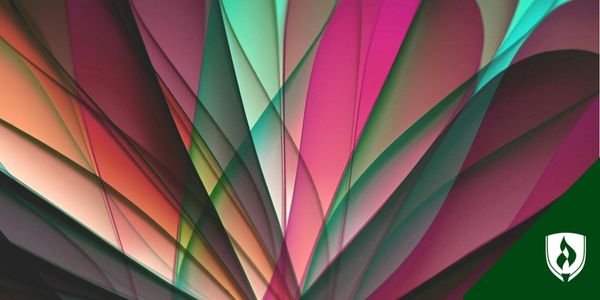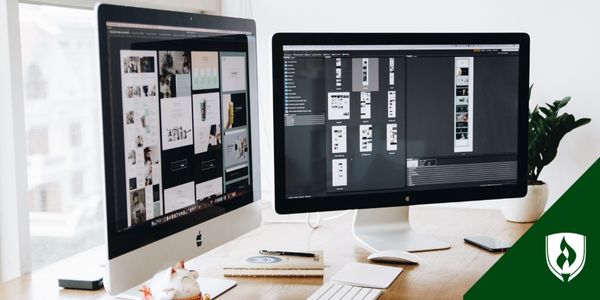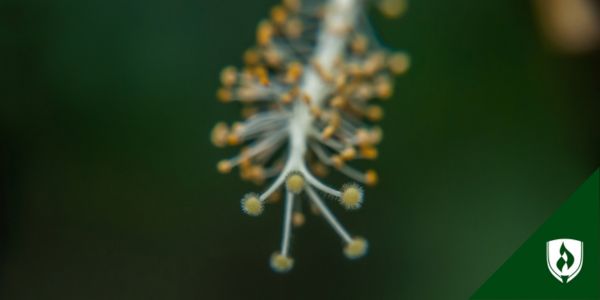
Going back to school is a big decision. It’s important to weigh your options and determine if the risk is worth the reward. After all, you’re looking to establish a career on this education and training, not just land another job.
You may have thought about becoming a graphic designer, but you’re just not sure if you’d be a good fit. You know you are a creative person and you love exploring the incredible work other artists create. But does that mean you’d be a good graphic designer?
“Creativity doesn’t like to be cornered or pinned down,” says Walter Funke, chief creative officer for Keys. “Anybody can push buttons on a computer, but consistently coming up with ideas is what makes someone a creative professional.”
If you are wondering how to tell if graphic design is for you, read on! We compiled insight from creative professionals to create a list of nine qualities that make a good graphic designer. Who knows? You may already be better equipped than you think.
Would I be a good graphic designer? 9 Signs it could be right for you
1. You’re communicative
You like people. And, even better, people like you. You’ve learned to understand what others are trying to say rather than what they tell you, and that quality makes it easy for people to connect with you.
This ability is so valuable in a graphic design career. “A trait I see amongst the designers I respect the most is the ability to really listen to someone. Not just to what they’re saying, but to get to the truth of what they want behind what they’re saying.” Funke says everyone comes to design partners wanting something, but they don’t always have the words to describe what they have in mind. The best designers know how to make clients feel heard and deliver on their desire.
Strong communication also involves speaking up. “In a world where you’re not surrounded by people who understand what good design looks like, your work is exactly as good as your ability to sell it,” Funke says. When you are meeting with stakeholders or clients to show them your design, it’s on you to help them understand why it meets their needs.
“Show your audience how well you understand the problem and why your solution is the correct one.”
2. You’re committed to continuous learning
Learning is a passion for you. You’ve never needed people to tell you to keep growing as a professional and as a person because it’s always been a high priority. You have the motivation to get off the couch and use your free time to better yourself.
“In many companies and agencies, graphic designers are ultimately accountable for their own work,” says Pablo Benites, graphic designer for TinderPoint. “As a result, feedback from colleagues is normally very generic and lacks the specific skills-based targets needed to improve.” Benites says the best graphic designers will avoid professional stagnation by proactively self-critiquing and seeking professional development.
Of course, when you are up to your neck in projects, learning new techniques and keeping an eye on the future tends to end up on the back burner—but don’t neglect your development for long. If possible, try to find ways to explore new techniques or experiment in your work when appropriate. For example, trying out a new approach for one of three early-stage mock-ups that will be presented to the client. The client might not choose your more “out on a limb” design, but the opportunity to practice and gather feedback can be valuable.
3. You’re a master multitasker
Your life is a constant juggling act. Between family obligations, housework, a job, the occasional after-work event and catching up on your favorite shows, you’ve got a ton on your schedule, but it never seems to faze you. In fact, you kind of enjoy the fast-paced lifestyle you’ve created.
Graphic designers rarely undertake one task at a time. Rather, they often find themselves handling multiple projects all at different stages with different clients. It’s imperative that you can effectively manage several things at once.
“You are often given work with pressing deadlines and conflicting priorities,” Benites says. “It can be difficult to juggle everything at once and at the same time, be creative in order to produce unique work of high quality.”
He believes accurately prioritizing tasks and seeking constant feedback on the progress of your work helps speed up turnaround times and keeps clients happy.
4. Creativity flows through you
You appreciate the unusual and unexpected sights in your day. You get tired of approaching a problem or task in the same way over and over again, so you try to come up with new ways to do things. You love mixing and matching new styles and repurposing old pieces to breathe new life into them.
Unsurprisingly, creativity is high on the list of skills a great designer must possess. But it’s more complex than you might think. The creativity you need as a graphic designer spans far beyond just pairing colors and typography. You’ll also be tasked with coming up with creative solutions to complex business problems, explains graphic designer and digital marketing consultant Rob Stephens.
“Can you present a client’s brand in a unique way that will stand out and avoid overused clichés? In today’s saturated and competitive marketplace, you need to consider what makes your client’s product or service special,” Stephens explains. “Design is not about making things look pretty. A graphic designer is often judged on the strength of their creative solutions.”
5. You’re constantly curious
You enjoy reading books, not because you have to but because you want to. On any given night, you can be found scouring social media for creative ideas. New trends and technologies pique your interest, and you enjoy pushing your limits.
“Above all, a designer must be curious,” says Kristen Friend, art director for Custom Legal Marketing. Trends and tools are always in flux. If a designer stays stagnant and doesn’t evolve with the industry, they risk becoming obsolete.
“Curiosity makes you a good listener who is able to work in any group environment,” Friend says. “It drives a willingness to continually learn and take risks, while also being flexible.”
6. You’re punctual
If you have dinner plans at 7:00, you’re there at 6:55. Unless there are unexpected circumstances completely outside of your control, you wouldn’t dare show up late to a meeting or event, and you’re never late paying your bills. Part of maintaining your busy schedule means keeping an organized calendar and managing your time wisely.
The world of graphic design is driven by often challenging deadlines. If you can’t keep up in a fast-paced environment, you may find yourself losing work, losing clients and, worst of all, losing paychecks. Successful graphic designers need to thrive when working under pressure.
“Meeting deadlines is critical to the success of a graphic designer and obtaining the trust of your future clients,” Stephens says. “You must commit to deadlines, and should there be a reason the deadline won’t be met, then you must notify the client as soon as possible.”
Stephens explains that clients are typically understanding of delays if communication is prompt and the hold-up isn’t your fault—but don’t count on always having that leeway available.
7. You’ve got thick skin
You’re a resilient person, so it takes a lot to hurt your feelings. Life has thrown its share of obstacles your way, but you’ve always picked yourself up, dusted yourself off and kept moving forward. You’re independent and self-reliant.
The graphic design industry can be tough, so it’s important to have thick skin. If a client or creative director gives you negative feedback about a design you’ve poured your heart into, you can’t take it personally. Successful designers don’t dwell on a single project—they take what they can from the critique, move on and focus on the next round of work.
“I worked in an advertising agency, and for the first few months, I treated each assignment like a direct reflection of my personality, skill and worth as a designer,” Funke says. He explains that in design school, you have time to explore and express yourself, but your expectations need to change when you start working.
“It’s far more important to make a functional piece of design within a deadline.” Funke says you will still make beautiful work, but it’s less about who you are and more about achieving the design’s goals.
8. You are collaborative and open to new ideas
Even in a field that values individual creativity, the reality is that no one does this job alone. Developing your voice also includes relying on insight from others, and that shouldn’t change if you want to excel in this field.
“Listen, learn and watch,” says freelance graphic designer Kristin Hess. She says senior designers, copywriters, social media managers and content creators have all taught her new ideas and techniques. “School teaches you a solid foundation, but I’ve learned exponentially from co-workers and creatives in my field.”
9. You are adaptable
Part of your creativity includes changing your perspective and rolling with new information. When you encounter opinions that differ from your own, you get curious and make mental notes. When life throws you a curveball, you don’t dwell on it—you just get started on figuring out how to make the best of the change.
This trait is a must-have for graphic designers. One thing to keep in mind, Hess emphasizes, is despite all the rules of design you may know, everything is an opinion. It’s not like math. “When it comes to design and creative careers, there are no wrong answers.” She explains that accommodating other people’s opinions might require adaptability on your part.
“If you are completely satisfied with a design, but the client comes back with ‘make the logo larger’ it may eat away at your core, but it is all a matter of preference.” Hess says graphic designers should work to discover their employers’ or clients’ design preferences and keep those preferences in mind while creating for them.
Is graphic design for me?
These are just some of the qualities good graphic designers share. Can you relate to any of the descriptions above? You may not align with all nine, but if a handful of these characteristics describe you, then you may be a natural fit in the world of graphic design.
Once you pair these soft skills with the necessary technical skills, you’ll be equipped to find success in the field. Wondering what it’s really like to work in this fast-paced industry? Check out our article What I Wish Someone Had Told Me BEFORE Becoming a Graphic Designer.




